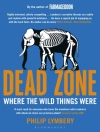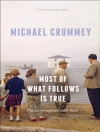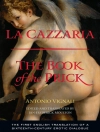New interpretations of different aspects of troubadour texts and lyrics, from their main themes and motifs to their reception and influence.
Nearly a millennium after their songs of love, politics, war, satire, and redemption began to fill the courts of Europe, the troubadours continue to fascinate modern audiences. However, many aspects of their work, such as the supposedly adulterous nature of
fin’amor, the ‘Frenchness’ of the troubadours, the biographical veracity of the
vidas, and the inherent misogyny of the troubadour lyric, have long been taken for granted. This volume takes a fresh look at these ideas, questioning many of the formative assumptions of troubadour scholarship, and proposing alternative readings of many canonical texts.
Essays offer a reconsideration of the reception of works by such important figures as Guilhem IX, Jaufre Rudel, Peire Vidal, Pistoleta, Guilhem Adhemar, Giraut de Borneil, Perdigon, Fulk of Marseilles, and Arnaut Daniel. There are also examinations of the lexicon and cultural uses of chess, azure and tin, and the changing landscape of the Rhone delta, providing a deeper understanding of the imagery they furnished. Other essays consider the later life of the manuscripts, including the surprising story of how Napoleon demanded certain Occitan manuscripts after his conquest of Italy. The collection as a whole is thus a fitting tribute to the pioneering work of Wendy Pfeffer, who has made such a contribution to the field of troubadour studies.
Table of Content
Introduction
Courtney Joseph Wells
Part I. Re-examining Troubadour Tropes and Themes
1. Reflections on Origins: How Troubadour Poetry Began
William D. Paden
2. Quirky Consumables: Guilhem IX’s Metaphors of
Joi and
Joc
Matilda Tomaryn Bruckner
3. Two anonymous troubadour texts:
Quan vei la flor sobre.l sambuc
(BEd T 461.205) and
Cant me donet l’anel daurat
(BEd T 461.203a)
Linda Paterson
4. Rereading Peire Vidal’s
Baron, de mon dan covit (
BEd T 364.7)
Francesco Carapezza (translated by Courtney Joseph Wells)
5. Restoring Pistoleta
Daniel E. O’Sullivan
6. Vashti and Esther in Occitania: The Value of Place-Based Knowledge and Inclusive Scholarship
Lisa Shugert Bevevino
Part II.
Materiality of/within Occitan Texts
7. Napoleon’s Troubadours
Elizabeth K. Hebbard
8. Knights, Pawns, and Troubadours: Constructing Troubadour Identity through the Arabic Language of Chess
Mary Franklin-Brown
9. Azure and Tin in the
Canso
Nuilla res by Giraut de Borneil
Catherine Léglu
10. Perdigon, Fulk of Marseilles, and the Expanding Economy of the Rhone River Delta
Constance H. Berman
Part III. The Legacy of Old Occitan and Troubadour Texts in Later Cultural Contexts
11. Old Occitan Songbooks in
Cinquecento Florence
Walter Meliga
12.
Un disio di parlare: A Vertical Reading of Canto 26 in Dante’s
Divina Commedia
Sarah Spence
13.
Jujar, to proensalesco: The Mythification of Occitan in the Theater of Dario Fo
Giuseppe Noto (Translated by Courtney Joseph Wells)
14. Jaufre Rudel Hits the Beaches of the Twenty-first Century: From Robertsonian to Lacanian?
Roy Rosenstein
List of Wendy Pfeffer’s Publications
Index
Tabula Gratulatoria
About the author
LINDA PATERSON is Professor Emerita at Warwick University.












